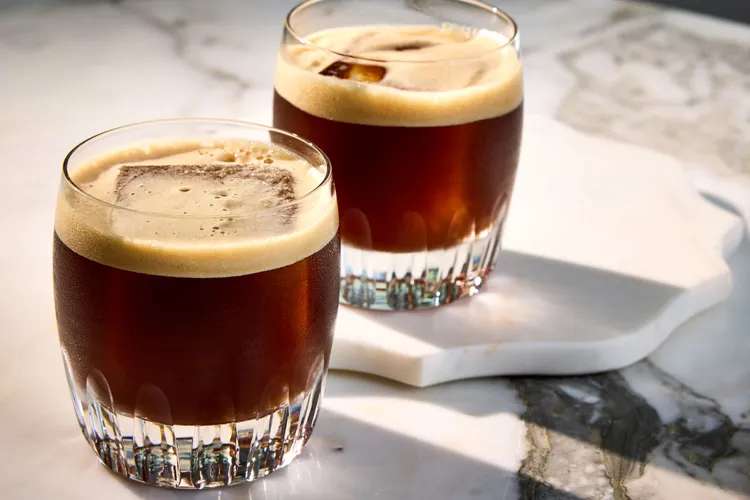What is a Carajillo?
A Carajillo is a popular Spanish coffee cocktail that combines espresso with a hard spirit, most commonly rum (especially Spanish-aged rum like Ron Viejo), brandy, or whisky. It’s known for being a simple, effective, and elegant drink that provides both a caffeine kick and alcoholic warmth.
It’s a staple in Spanish cafes and bars, enjoyed both as a morning pick-me-up (though this is debated) and as an after-dinner digestif.
The Two Main Preparation Styles
There are two primary ways to make a Carajillo, and the method can significantly change the drink’s character.
1. The Simple Mix (Most Common Outside Spain)
This is the easiest method, often seen in many restaurants.
-
How it’s made: A shot of espresso is poured directly over a portion of the chosen spirit (usually 1:1 ratio) in a glass with ice. It’s stirred and served.
-
Result: A strong, straightforward drink where the coffee and alcohol remain distinct layers of flavor.
2. The “Burnt” or Flamed Method (Traditional Spanish Method)
This is the classic, theatrical method that creates a more complex and integrated drink.
-
How it’s made:
-
A measure of spirit (rum or brandy) is poured into a heat-resistant glass.
-
The Key Step: The spirit is briefly flambéed (set on fire) or gently heated with a few coffee beans and a lemon or orange peel twist. This caramelizes the sugars in the spirit and infuses it with the citrus oils.
-
The flame is extinguished, and a freshly pulled shot of hot espresso is poured into the glass, mixing with the warmed, flavored spirit.
-
It is often served over ice in a separate glass.
-
-
Result: A smoother, slightly sweeter, and more aromatic drink where the flavors of the coffee and spirit are melded together.
Key Characteristics
-
Flavor Profile: Bitter, robust coffee balanced by the sweet, woody, and warming notes of the spirit. The flamed method adds notes of caramel and citrus.
-
Strength: It’s a potent drink, both in terms of caffeine and alcohol.
-
Serving: Almost always served in a short glass, like an Old Fashioned glass, and very commonly over ice (con hielo).
History and Etymology
The name “Carajillo” is believed to have origins in colonial Cuba during the 19th century.
-
The most popular theory suggests it comes from the Spanish word coraje, meaning “courage” or “daring.” The story goes that Spanish troops in Cuba would mix coffee with rum to give themselves “courage” (para darle coraje) before heading into battle. The word allegedly morphed from “corajillo” to “carajillo.”
-
Another theory links it to the word carajo, a slang term with various meanings, implying the drink gives you a “kick” or a “jolt.”
How to Order It
In Spain, you would specify your spirit of choice:
-
Carajillo de Ron: (The most classic) Made with rum.
-
Carajillo de Brandy: Made with brandy (like Spanish Brandy de Jerez).
-
Carajillo de Whisky: Made with whisky.
Similar Drinks Around the World
The concept of mixing coffee and alcohol is universal:
-
Italy: Caffè Corretto (“corrected coffee”), where a shot of espresso is “corrected” with a splash of grappa, sambuca, or brandy.
-
Ireland: Irish Coffee, which combines coffee, Irish whiskey, sugar, and a layer of cream.
-
Mexico: In Mexico, “Carajillo” has its own identity, often made with Licor 43 (a sweet, vanilla-citrus liqueur) and espresso, served over ice. This is a much sweeter and distinct variation.
In summary, the Carajillo is a simple yet sophisticated drink deeply rooted in Spanish café culture, perfect for those who appreciate the combined pleasures of good coffee and fine spirits.
